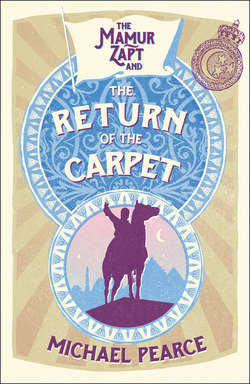Читать книгу Mamur Zapt and the Return of the Carpet - Michael Pearce - Страница 4
AUTHOR’S NOTE
ОглавлениеCairo, 1908. The heyday — or is it just past the heyday? — of indirect British rule. Thirty years earlier the profligate Ismail Pasha, Khedive of Egypt, had brought his country to the edge of bankruptcy. The Western powers had stepped in but at a price, and their yoke bore hard. In 1881 Egyptian unrest became open rebellion. To safeguard its financial interests Britain sent in an army, crushed the rebels and restored the Khedive, but from now on the Khedive governed in name only; the real ruler of Egypt was Cromer, the British Agent and Consul-General. A complex apparatus of control was introduced. There were British ‘advisers’ at the top of all the major ministries; the Commander-in-Chief of the Egyptian Army, the Sirdar, was British; so were the Inspector-General of Prisons, the Commandants of the two key police forces of Cairo and Alexandria; and of course the Mamur Zapt, the Head of the Political CID — the Secret Police.
But by 1908 British rule was not as firmly based as it looked. Other powers were growing jealous. France had cultural links with Egypt which dated back to Napoleon and had never forgiven the British for staying on after crushing the Arabi rebellion. Many of Egypt’s criminal procedures were based upon the Code Napoléon and the judicial system in general followed French lines. This meant that investigation and prosecution were the responsibility not of the police but of the Department of Prosecutions of the Ministry of Justice; that is, of the Parquet.
Turkey was also jealous, for Egypt was still constitutionally a province of the Ottoman Empire and the Khedive in theory owed allegiance to the Sultan of Istanbul.
And all the time the underground forces of Egyptian Nationalism were growing in strength and now, in 1908, were just beginning to assert themselves.
Egypt was a country of many potential masters. It had four competing legal systems, three principal languages, and several religions, apart from Islam. It had many, many nationalities. It was a country ripe with ambiguities. A country bright with sunlight and dark with shadows. And in the shadows, among the ambiguities, worked the Mamur Zapt.
In this story I have tried to stay close to fact. The streets are those of Cairo in 1908. The terrorist ‘clubs’ were a feature of the period too. There really was a National newspaper called al Liwa and in 1908 Kitchener’s famous screw-gun battery really did accompany the Return of the Carpet. There was even a Mamur Zapt, although perhaps he was not quite like this one.
